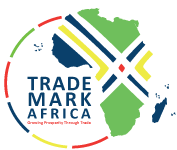President Abdel Fattah El Sisi said on Sunday 8/3/2015 that Egypt would host in 2015 the Tripartite Summit of the East Africa Community (EAC), the Southern African Development Community (SADC) and the Common Market for Eastern and Southern Africa (COMESA). This came during a meeting held between Sisi and African ambassadors accredited to Egypt, Presidential Spokesman Alaa Yousef said. The meeting was attended by Foreign Minister Sameh Shoukry and Presidential Adviser for National Security Affairs Fayza Abul Naga, he added. At the beginning of the meeting, Sisi welcomed African ambassadors and informed them of Egypt's keenness on strengthening ties with all African countries, Yousef noticed. Sisi shed light on the importance of boosting cooperation and dealing with joint issues especially the terrorism issue. All African countries should promote solidarity to handle economic and social problems faced by their peoples, Sisi underlined. Egypt is looking forward to strongly fostering relations with the Nile Basin countries to serve as a model for all African states, Sisi emphasized. Egypt's call for all African countries to attend the Economic Development Conference (EEDC), which will be held in Sharm el Sheikh during the period March 13-15,2015 comes in tandem with its keenness to increase economic cooperation among African countries and expand the role of investment and the private sector in promoting development process in the African continent, Sisi stressed. Source: AllAfrica.com
Sisi – Egypt to Host Tripartite Summit of EAC, SADC, Comesa
Posted on: March 10, 2015
Posted on: March 10, 2015















